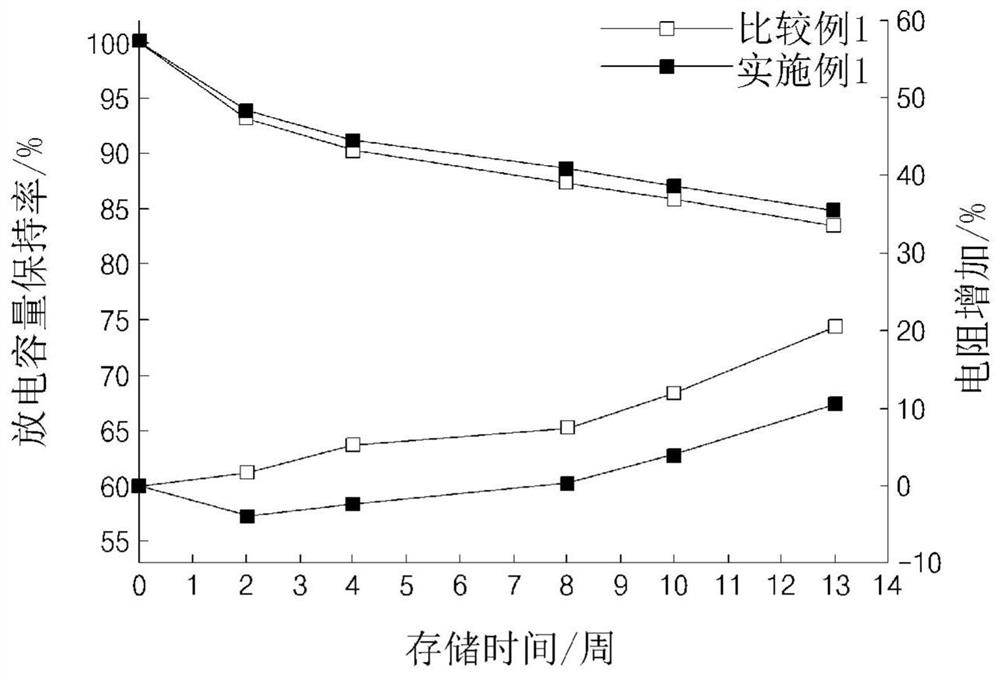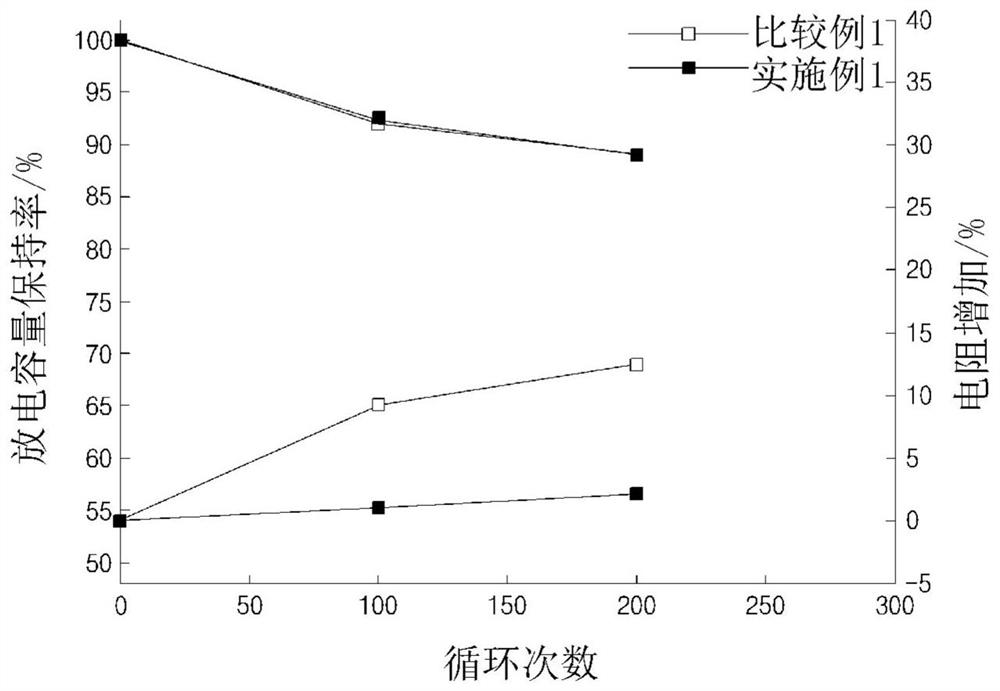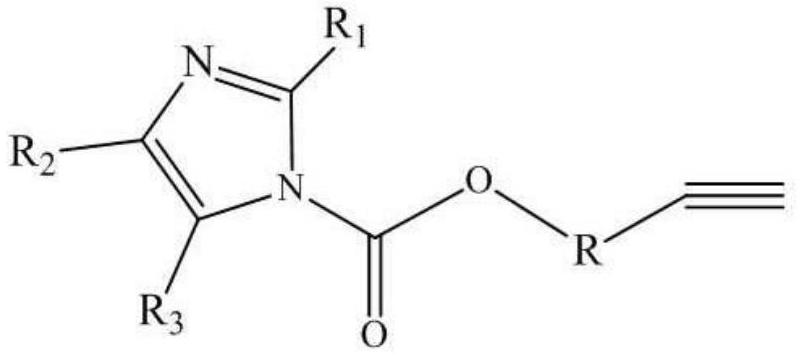Non-aqueous electrolyte for lithium secondary battery and lithium secondary battery comprising same
A lithium secondary battery, non-aqueous technology, applied in secondary batteries, non-aqueous electrolytes, lithium batteries, etc., can solve the problems of reduced battery life and increased resistance, and achieve the effect of improving high-temperature durability
- Summary
- Abstract
- Description
- Claims
- Application Information
AI Technical Summary
Problems solved by technology
Method used
Image
Examples
Embodiment 1
[0135] (Preparation of non-aqueous electrolyte for lithium secondary battery)
[0136] A compound represented by 0.5 g of formula 1a as a first additive, 1 0.0 g of difluorophosphate as a second additive and 0.1 g of tetravinylsilane as a third additive, 1.0 g sulfonate, 0.5 g 1, 3-propanesolane, 0.2 glibf 4And 6.0 g of fluorobenzene to dissolve 0.7M LiPF 6 And 0.3 m lifsi of 90.7 g organic solvent (ethylene carbonate: ethyl carbonate = 3: 7 volume ratio), the non-aqueous electrolyte of lithium secondary batteries was prepared.
[0137] (Secondary battery preparation)
[0138] Positive active material (Li (Ni) 0.8 CO 0.1 Mn 0.1 ) O 2 : Li (Ni 0.6 CO 0.2 Mn 0.2 ) O 2 = 7: 3% by weight, carbon black as a conductive agent and polyvinylidene fluoride as a binder added to N-methyl-2-pyrrolidone (NMP) as a solvent at a weight ratio of 97.5: 1: 1.5. Moisture to prepare a positive pole slurry (solid content: 50% by weight). The positive electrode slurry was applied with a 15 μm thick posi...
Embodiment 2
[0143] (Preparation of non-aqueous electrolyte for lithium secondary battery)
[0144] A compound represented by 0.2 g of formula 1a as a first additive, 1 0.0 g of diofluorophosphate, and 1.0 g of sulfonate as a third additive, 0.5 g of 1,3-propane sulture, 0.2g LIBF 4 And 6.0 g of fluorobenzene to dissolve 0.7M LiPF 6 And 0.3 m lifsi of 91.1 g of organic solvent (ethylene carbonate: ethyl carbonate = 3: 7 volume ratio), thereby preparing a non-aqueous electrolyte for lithium secondary batteries.
[0145] (Secondary battery preparation)
[0146] Positive active material (Li (Ni) 0.8 CO 0.1 Mn 0.1 ) O 2 , The carbon black as a conductive agent is added to N-methyl-2-pyrrolidone (NMP) as a solvent at a weight ratio of 97.5: 1: 1.5, to prepare a positive pulp (Solid content: 50% by weight). The positive electrode slurry was applied with a 15 μm thick positive electrode concentration fluid (Al film), dried and then rolled to prepare a positive electrode.
[0147] The negative electro...
Embodiment 3
[0151] (Preparation of non-aqueous electrolyte for lithium secondary battery)
[0152] A compound represented by 0.5 g of formula 1a as a first additive, 1 0.0 g of difluorophosphate as a second additive and 0.1 g of tetravinylsilane as a third additive, 1.0 g sulfonate, 0.5 g 1, 3-propanesolane, 0.2 glibf 4 And 6.0 g of fluorobenzene to dissolve 0.7M LiPF 6 And 0.3 M lifsi of 90.7 g of an organic solvent (ethyl carbonate: ethyl carbonate = 3: 7 volume ratio), the non-aqueous electrolyte of lithium secondary batteries was prepared.
[0153] (Secondary battery preparation)
[0154] Positive active material (Li (Ni) 0.8 CO 0.1 Mn 0.1 ) O 2 , The carbon black as a conductive agent is added to N-methyl-2-pyrrolidone (NMP) as a solvent at a weight ratio of 97.5: 1: 1.5, to prepare a positive pulp (Solid content: 50% by weight). The positive electrode slurry was applied with a 15 μm thick positive electrode concentration fluid (Al film), dried and then rolled to prepare a positive elect...
PUM
 Login to View More
Login to View More Abstract
Description
Claims
Application Information
 Login to View More
Login to View More - R&D
- Intellectual Property
- Life Sciences
- Materials
- Tech Scout
- Unparalleled Data Quality
- Higher Quality Content
- 60% Fewer Hallucinations
Browse by: Latest US Patents, China's latest patents, Technical Efficacy Thesaurus, Application Domain, Technology Topic, Popular Technical Reports.
© 2025 PatSnap. All rights reserved.Legal|Privacy policy|Modern Slavery Act Transparency Statement|Sitemap|About US| Contact US: help@patsnap.com



